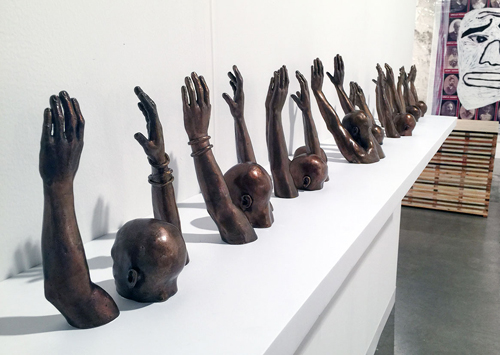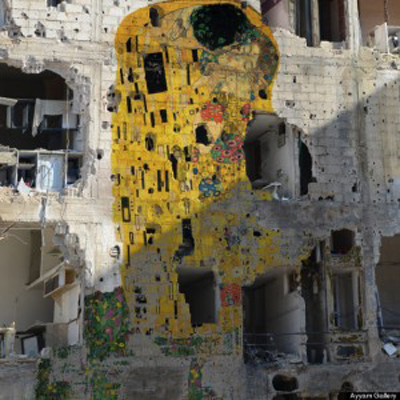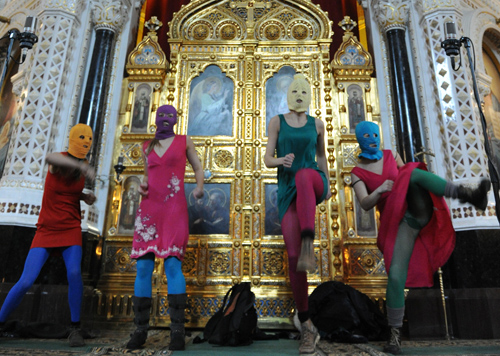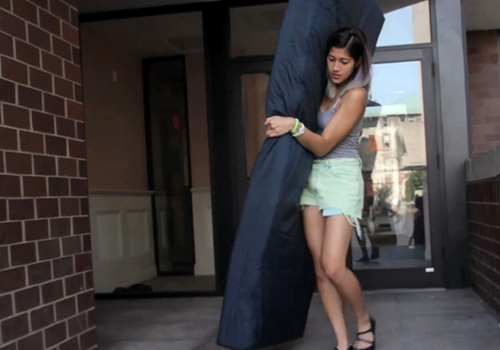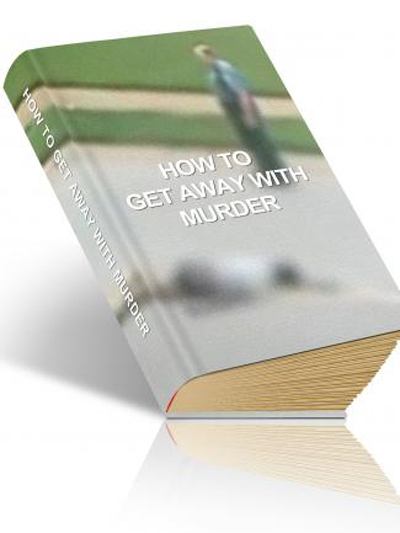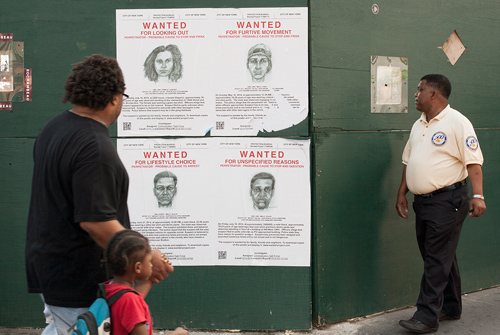Viral activism: art form of our times
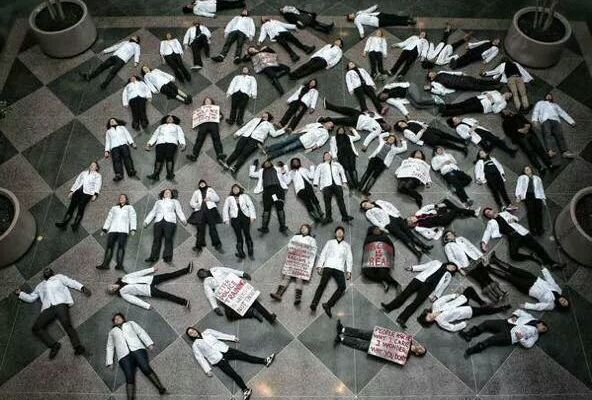
Harvard medical students stage a die-in 9 December 2014; via Instagram @AshleyBSunshine
Artists have long addressed social, political, gender and racial issues through their art. So what is new? In one word – technology. The world recently witness artist responses to the Charlie Hedbo shootings, creative protests to the Ferguson verdict, and a mattress performance on US campus – incidents that went viral creating a new generation of art activists.
Simply, the Internet has become a performative community that extends, and completes, an artwork making social media a key medium for many artists working in, and responding to, social issues.
In the past, art activism largely remained within the realm of the art world, ultimately aestheticising and/or presenting a situation, but largely remaining “in-community”. But in December, US writer Ben Davis described a trend in art activism that is effectively creating a new art movement which he felt:
‘represents the most significant development of grassroots visual culture since the explosion of the graffiti scene in the 1970s.’
In 2014 hashtag campaigns dominated political discourse on social media and reached a whole new level of prominence. Most recently, there was a string of incidents that erupted a nation in December, and then the world in January. Artists were often among the first with creative reactions.
The trigger
The US grand jury decision not to indict police over the shooting of unarmed Afro-American teenager Michael Brown, in the small town of Ferguson Missouri, prompted outrage on social media. The announcement had disturbing echoes for the ritzy art crowd gathering at Art Basel Miami. Only a year prior, Miami graffiti artist Israel Hernandez-Llach (aka Reefa) had been shot by police with a Taser while tagging.
These two cases and several others in between prompted a public response. Within hours of the Brown verdict “die-ins” were being staged in New York, then across the nation.
The unplanned meme
Art Basel immediately became the scene of an artistic response, offering respite from ‘fairtigue‘ and creating echoes far beyond the art world.
A sculpture displayed by South Africa’s Goodman Gallery at the same Miami fair by artist Hank Willis Thomas, titled Raise Up (2014), saw hundreds of images of the artwork posted on social media. The row of bronze figures with hands raised echoed the wider viral “Hands Up” gesture that was in play.
Thomas told media: ‘It is rare, when you make art with a social impact in mind, that it resonates so much with what people are dealing with in the streets. I live for those moments.’
Installation view of Hank Willis Thomas’ sculpture at Art Basel Miami was intended for a social media reaction. Source art4ever.org blog
A month later, Charlie Hedbo’s Paris headquarters was stormed, killing 12 people including cartoonists known for their activist images. While the world spun into debate on the terrorist action, fellow cartoonists took to their drawing boards internationally, their images posted and circulated at a wild rate.
Screengrab Twitter; image David Pope
What became apparent in both these cases is that the image – and its circulation – had become a creative activist tool. Real world and art world collide – and the “glue” was social media.
The proximity of these cases highlights the role artists play in inspiring and enabling the activism of our times. Artworks that go viral in this context become – intentionally or unintentionally – part of a new art movement.
Art made to meme
Meme culture is defined as an ‘an idea, behaviour or style that spreads from person to person within a culture’. Memes are units or templates for carrying cultural and social ideas that evolve, morph, transmit and have a viral quality. They can be serendipitous – a tourist video of a baby elephant sneezing – or contrived – the Evian ad of roller-skating babies.
But increasingly artist are creating for the meme market. Shirin Barghi’s Last Words meme emerged around the Ferguson verdict and used simple graphics, white-on-black, that framed these individual tragedies within the spectre of a social media narrative blurred with a design vernacular. And yet, these seemingly simple text works used the last words uttered by each victim of the recent police killings in the US. It effectively became a work of shared authorship between Barghi, the victim and the active follower or reposter.
Blogger theroot commented on Barghi’s modus operandi: ‘Last Words can also be read as being about the memeification of politics, cataloguing how rapidly today’s viral environment ferments symbols, symbols which can’t help become a reference for artists looking to plug into the present’s political energies.’
Viral activism can be more participatory and creative than just a rash of reposting. With #IfTheyGunnedMeDown created by Twitter user CJ_musick_lawya, the artist introduced the hashtag and handed it over to African American Twitter, who were given a platform to post conflicting pictures of themselves. The statement – that media’s choice of images turns on racial stereotypes – was made not by a single artist-created image but by a flood of images on the model the artist had created..
Screengrab from Tumblr #IfTheyGunnedMeDown; self authored protest meme.
CJ_musick_lawya’s original tweet gained over 1,000 retweets within 24 hours, and the hashtag was retweeted over 110,000 times in that same period, reported Dr. Joel Penney of the Viral Politics blog, Know Your Meme. The “selfie” had become an avenue of viral politics.
Penney observed: ‘#iftheygunnedmedown was only a small piece of the broader social media activity surrounding the #blacklivesmatter movement, yet it most acutely demonstrates how networked digital platforms in fostering unique and innovative modes of grassroots political expression.’
In a similar way, performative actions – or performance artworks – have been staged explicitly with the intention of being snapped on a smart phone and disseminated across a perpetuating network; posted with individual comments that fuel a dialogue.
These may be anything from “die-ins” staged in solidarity about an issue, visually choreographed and photographed (see top), to New York-based artist Dread Scott who performs actions in public hoping to be photographed and posted by others, to the creation of staged images intended to go viral, such as Syrian artist Tammam Azzam’s use of Gustav Klimt’s The Kiss which was a comment on his nation’s recent conflicts.
Dread Scott’s improvised performance in New York in response to Ferguson verdict. Source dreadscott.net
Azzam superimposed Klimt’s iconic painting on the façade of bullet-ridden building in the city of Damascus using Photoshop. It took the Twittershere by storm, using art to bring attention to Syrian conflict.
Simply, these forms of viral activism call for a creative engagement – not your traditional banner waving, picketing, boycotting action – but activism from your desktop. Click and send it on.
Azzam Gustav’s appropriated Klimt image went viral in comment to Syrian conflict.
Performance art becomes viral activism
The masters, and many would argue the pioneers, of performance-based viral activism is the Russian feminist punk rock group Pussy Riot. Established in 2011, the group stages provocative guerrilla performances in public locations, then post their music videos on the Internet. In Russia, where broadcast and print media largely under state control by the government, the internet is a key platform for opposition activism – many of whom are artists.
Pussy Riot performing their Punk Prayer (2012) in the Russian Orthodox Cathedral of Christ the Savior, Moscow, disseminated on the Internet, saw two member Jailed
The imprisonment of Pussy Riot brought Russia’s New Viral Dissident Art to international attention. British graffiti artist Banksy spoke out and celebrity curator Klaus Biesenbach, Director of MoMA PS1 in New York, presented a conversation in November 2014 with members of Pussy Riot – promoted on Instagram only the day prior – titled Zero Tolerance: Activism, Artistic Courage and Civil Disobedience.
Saudi Arabian musician and comedian Hisham Fageeh is another example. His No Woman No Drive video adaptation of Bob Marley’s famous song is a direct attack on the kingdom’s ban on women drivers. It gained nearly 3.5 million views in two days and 12 months later has 2.6 million views.
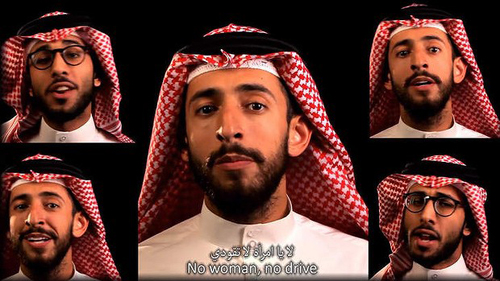
Emma Sulkowicz’s Mattress Performance: Carry That Weight took a local event at a university campus and turned it into national – then international – call for justice. Majoring in the visual arts, Sulkowicz’s response to her alleged rape in her dorm room was to carry her mattress every day until her rapist left the university. Images of her daily performance flooded social media, were reblogged on Tumblr and feminist blogs. The New York Magazine used one such image as their cover, and she will be attending President Obama’s 2015 address to nation. The piece is her thesis artwork.
Emma Sulkowicz, Mattress Performance: Carry That Weight (2014), Screengrab YouTube.
A new movement
Like all art movements, viral activism is already being reinterpreted through new techniques and presentations.
Paul Chan, winner of the prestigious 2014 Hugo Boss Prize, through the publishing company he founded, Badlands Unlimited, produces mock book covers to give voice to topical current issues, delivered with a serious dose of sarcasm in the post-Ferguson wave. Chan’s covers gained further traction with Charlie Hedbo as the literary frame resonated with audiences. Now Badlands has prepared ‘a reading list for why race matters’: a list of real books promoted by an artist whose fame is from creating fake books.
Source: Badlands Unlimited
Dread Scott launched his version of the policed “Wanted” poster – generic yet stereotyped pictures of young black men – that could be downloaded off the Internet and then posted. The project started in New York’s Harlem and then went viral. The message was against racial profiling, and with each poster headed up “fits description”, it was also presented as an art exhibition.
Wanted Project by Dread Scott; Source Wanted
The ability of art to function as an arena and medium for political protest and social activism has moved beyond merely protest art or activist art. Today it is a sophisticated, constructed image or action that is intended to be broadcast, and then involve an online community to propagate that message, with the hope of going viral. Sometimes that artwork is participatory inviting comment, offering memes to interact with, or an opportunity for selfies and photo-bombing with a social conscious.
What is key in defining this new trend – or art movement – is that it is entirely reliant on smart technology – and for that very reason it is a new movement unlike anything a previous generation of artists could produce.
First published on ArtsHub.com.au, January 2015
